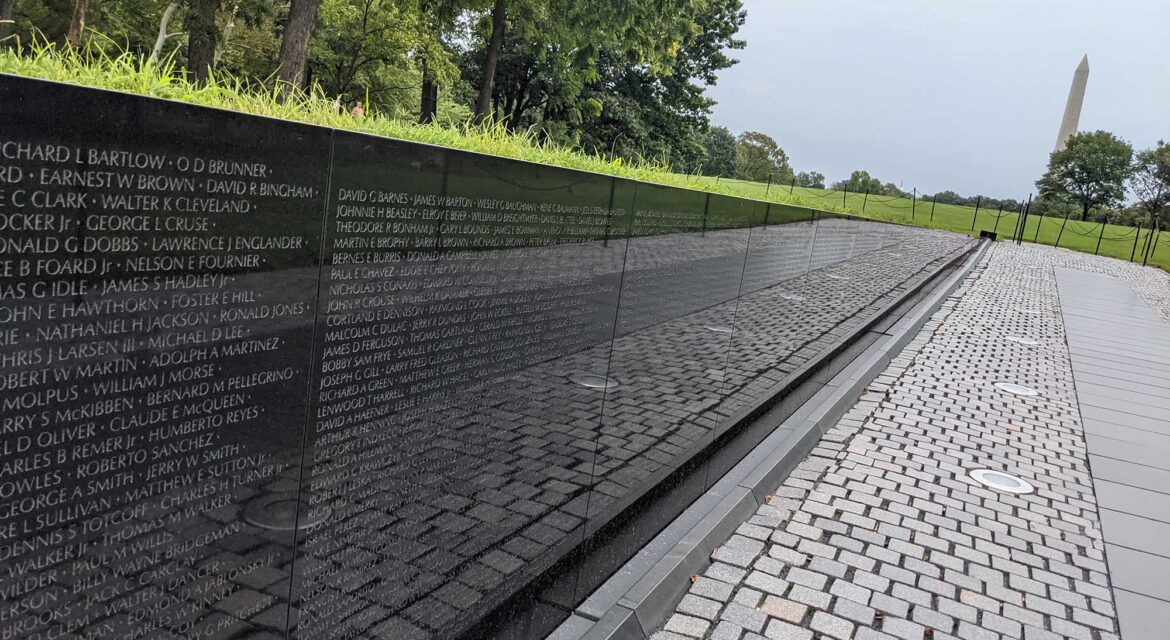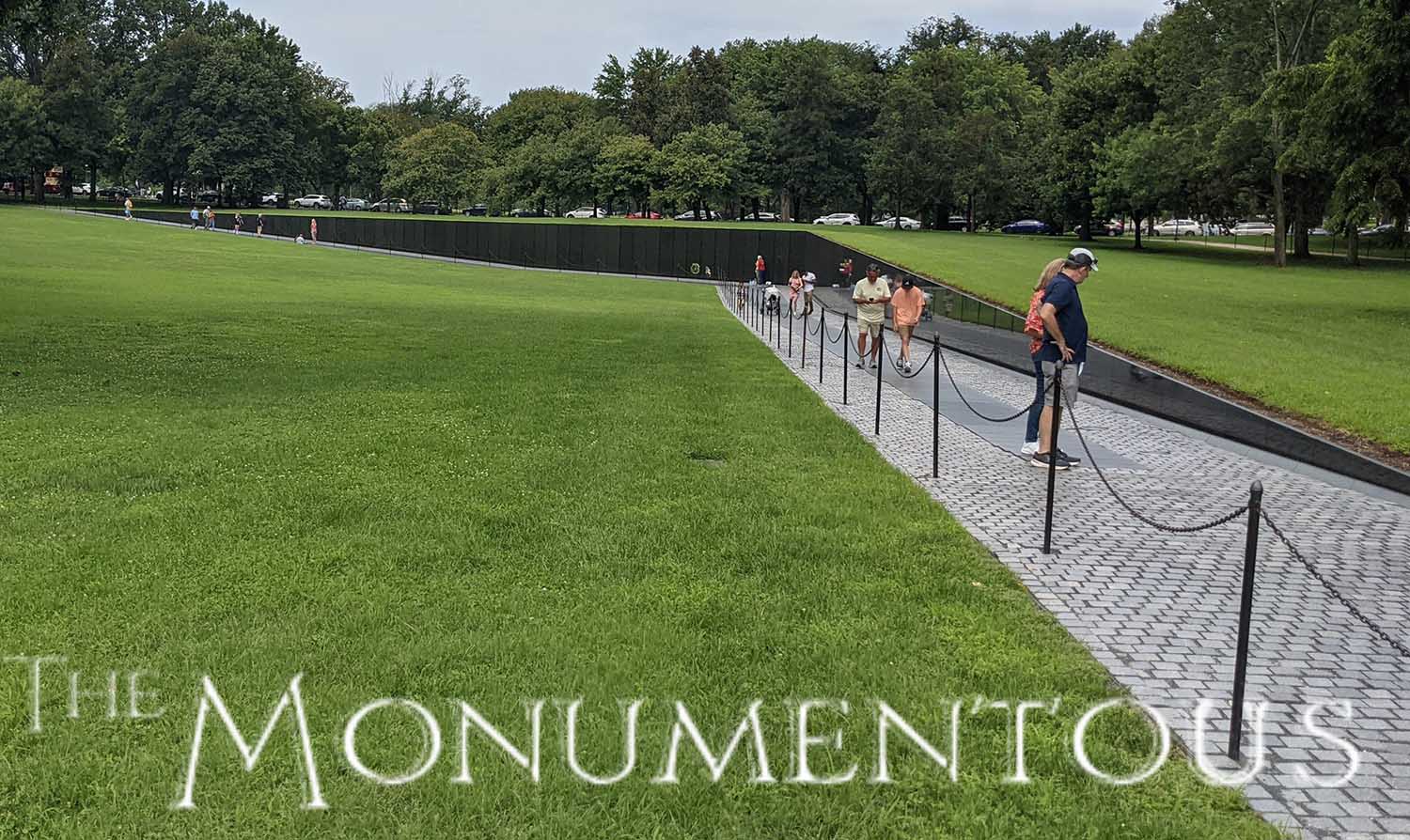 Commissioned to honor all members of the United States armed forces who served and died in the Vietnam War, the Vietnam Veterans Memorial has been able to celebrate the legacy of the individual sacrifices made in the war. Located adjected to the National Mall in Washington D.C., the monument honors the courage, sacrifice and duty to country on the part of all who participated, as the minimalist design showcases what it can look like to enable connection with audiences that resonates on multiple levels.
Commissioned to honor all members of the United States armed forces who served and died in the Vietnam War, the Vietnam Veterans Memorial has been able to celebrate the legacy of the individual sacrifices made in the war. Located adjected to the National Mall in Washington D.C., the monument honors the courage, sacrifice and duty to country on the part of all who participated, as the minimalist design showcases what it can look like to enable connection with audiences that resonates on multiple levels.
A Tangible Symbol of the Sacrifices Made During the Vietnam War
 The Vietnam Veteran’s Memorial Fund, Inc. is the nonprofit organization authorized by Congress in 1980 to fund and build the Vietnam Veterans Memorial in Washington, D.C. The organization sought a tangible symbol of recognition from the American people for those who served in the war.
The Vietnam Veteran’s Memorial Fund, Inc. is the nonprofit organization authorized by Congress in 1980 to fund and build the Vietnam Veterans Memorial in Washington, D.C. The organization sought a tangible symbol of recognition from the American people for those who served in the war.
After a nationwide competition sponsored by the Vietnam Veterans Memorial Fund that saw over 1,400 designed submitted for consideration, a design by American architect Maya Lin was selected. The minimal design was controversial, which is why a flag and figurative sculpture of servicemen was added to the plan. As a result of this, a traditional statue stands at the entrance to the memorial. Each of the three soldiers are over seven feet tall and are arranged as if they’re looking upon the memorial wall.
The Vietnam Veterans Memorial itself is a black granite V-shaped wall that is inscribed with the names of the more than 58,000 men and women who were killed or missing in action. Receding into the ground and then rising back out of it, visitors’ faces are reflected in the walls bearing the etched names of the 58,318 men and women who died in combat or are listed as missing in action (MIA).
Completed in 1982, the Vietnam Veterans Memorial Wall, also known as The Wall That Heals, has individual walls that are composed of 70 separate inscribed panels. The largest panels have 137 lines of names while the shortest have one line. Each name is preceded or followed by a symbol designating status. The diamond symbol represents a service member’s death while the plus symbolizes missing in action. If their remains are identified, a diamond is superimposed over the cross.
This simple but powerful design has connected with audiences on multiple levels, enabling connections that have spurred an incredible cultural and economic impact that can be seen across the site and beyond.

Facilitating the Expansion and Evolution of the Legacy of the Vietnam War
 The Vietnam Veterans Memorial is continually changing, as the organization receives numerous requests each year from individuals who desire to have particular names placed on the Memorial. The Department of Defense makes these decisions, highlighting how the monument continues to change. The addition of the Vietnam Women’s Memorial in 1993, which is dedicated to the nurses and women of the United States who served in the Vietnam War, further highlights how the space and monument continue to evolve.
The Vietnam Veterans Memorial is continually changing, as the organization receives numerous requests each year from individuals who desire to have particular names placed on the Memorial. The Department of Defense makes these decisions, highlighting how the monument continues to change. The addition of the Vietnam Women’s Memorial in 1993, which is dedicated to the nurses and women of the United States who served in the Vietnam War, further highlights how the space and monument continue to evolve.
Books, postcards, CDs, DVDs, and educational materials associated with the Vietnam Veterans Memorial are available for sale at the nearby Lincoln Memorial bookstore. It has also been ranked on the “List of America’s Favorite Architecture” by the American Institute of Architects and has been placed on the National Register of Historic Places, highlighting the indirect impact it has compelled.
Numerous transportable and permanent replicas of the Vietnam Veteran’s Memorial have been created so those who are not able to travel to the monument can experience it. One of the most notable is “Wall South,” a half-size replica in Pensacola. Replicas of other sizes and scales are located throughout the country.
Many who visit the Vietnam Veterans Memorial leave behind items in memoriam, highlighting an essential means of connection. Additionally, visitors have been known to place piece of paper and place it over a name on the memorial and rub a wax crayon or graphite pencil over it as a memento of their loved ones. These examples highlight how the monument is able to connect with audiences in the present and will continue to be able to do so into the far future.

Enabling Connections Across the Eras
 Receiving around 5 million visitors each year, the Vietnam Veterans Memorial is free and open to the public 24 hours a day. This access along with the unique and powerful design it pioneered has cultivated interest at the site and beyond, showcasing what memorials, as well as a unique approach to landmark design, can represent to audiences of multiple eras.
Receiving around 5 million visitors each year, the Vietnam Veterans Memorial is free and open to the public 24 hours a day. This access along with the unique and powerful design it pioneered has cultivated interest at the site and beyond, showcasing what memorials, as well as a unique approach to landmark design, can represent to audiences of multiple eras.


